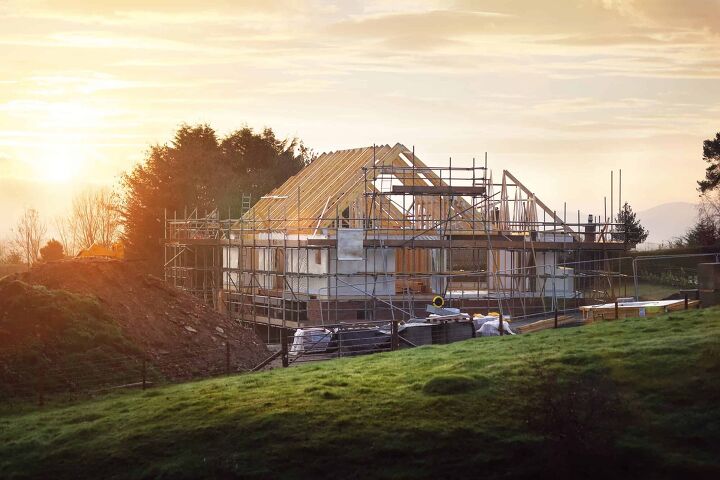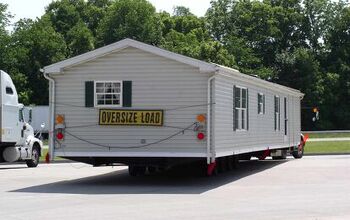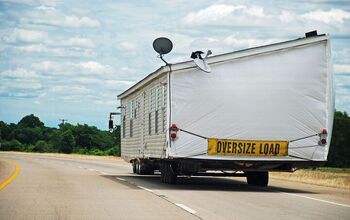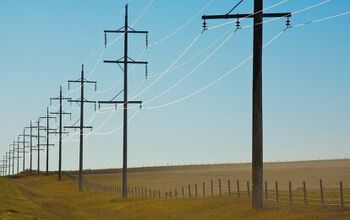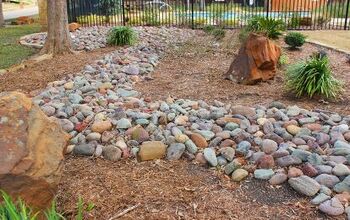How Much Does It Cost to Set Up Utilities on Land?

Buying land is the American Dream. Who hasn’t had the idea of purchasing a plot of land and building the perfect home right on top of that plot? Unfortunately, there is far more to the dream than most of us realize. Like setting up utilities on that land.
It costs an average of $20,000 to set up utilities on land. Electrical utilities cost $3,000, and it costs $2,650 to connect land to a municipal water system, on average. Surveying the land costs another $1,650, and permit prices vary between states when you set up utilities on your land.
Standard Site Development Costs
There are so many different factors that go into developing a piece of property that it can be tough to provide a solid number. We’ll go over those costs a bit further down, but here is a general overview of what you can expect to pay when developing a property:
| Fee/Permit Description | Municipal Water/Sewer | On-Site Water/Septic | ||
| Building, inspection, certificate of occupancy (CO) | $300-$5,000 | $300-$5,000 | ||
| Septic system | $100-$3,000 | |||
| Soil test | $100-$500 | |||
| Well | $100-$1,000 | |||
| Driveway | $50-$500 | $50-$500 | ||
| Impact Fee (may not be charged) | $5,000-$25,000 | $5,000-$25,000 | ||
| Electrical | $1,000-$5,000 | $1,000-$5,000 | ||
| Municipal Sewer | $1,000-$15,000 | |||
| Municipal Water | $700-$20,000 | |||
| Survey | $300-$3,000 | $300-$3,000 | ||
| Engineering Inspection | 0-$1,000 | 0-$1,000 | ||
| Drilling, casing, cap per ft. | 0-$40 | $15-$40 | ||
| Water treatment (if necessary) | $1,000-$5,000 | |||
| Development, pump, trenching, pressure tank, piping, etc. | $1,000-$5,000 | |||
| Design | $300-$1,000 | |||
| Soil testing | $500-$1,000 | |||
| Installation | $5,000-$30,000 | |||
| Clearing | $0-$2,500 | 0-$2,500 | ||
| Drainage | $1,000-$5,000 | $1,000-$5,000 | ||
| Grading | $2,500-$5000 | $2,500-$5,000 | ||
| Steep site grading, cutting, filling | $1,000-$5,000 | $1,000-$5,000 | ||
| Retaining Walls per sq. ft | $20-$50 | $20-$50 | ||
| Landscaping | $3,000-$20,000 | $3,000-$20,000 | ||
| Asphalt or Concrete Paving | $3,000-$10,000 | $3,000-$10,000 | ||
| Total | $18,870-$122,000 | $26,285-$133,590 | ||
As the chart shows, there are so many variables involved that predicting a solid budget is nearly impossible. It depends on whether you will have municipal water and sewer or septic, what kind of driveway you plan to have, any landscaping, etc. The simple fact of the matter is that utilities can also depend on the type of land that you have.
No matter how you slice it, developing a property is not cheap. To make that land suitable for home construction, there are quite a few things that need to be done and you’ll need to make certain that you have the budget to cover it all. This is also a great way to gauge whether or not a particular piece of property is something that you should be investing in. Know what you are dealing with before making the leap to avoid ugly surprises.
Video: Do A Utility Assessment Before Buying Your Homestead Land
Developing Land That Has no Utilities
It is important to know prior to purchasing a plot of land just what will be needed to properly develop that swath of land. Most will want basic services on that piece of land – sewer, water, power, gas, etc. – but it is important to take a few things into consideration before beginning the process.
Check to See if it Has Utilities
You can potentially save yourself a lot of time and money by checking to see if the land already has utilities. Far too often, landowners will begin the process of having utilities installed without having done their homework and fail to properly budget their costs.
This is the most important step of the process because it will help you budget your costs for developing the land and building on it. You can check online with some municipalities while others will likely require a phone call. Don’t assume anything; you don’t want to get a bad surprise in the end.
Know Your Location
Another major factor in purchasing a plot of land for development is knowing its relative location to nearby utilities. If you are looking at a parcel of land and are told that there are utilities “nearby”, that is extremely vague.
Utilities are very expensive to install and can take enough time as it is. Compounding the problem because there are not any utilities close enough can be an issue that you can avoid with a few questions beforehand.
Likewise, the costs of your utilities can depend greatly on where your land is located and its proximity to the public utility connections. The only way to be truly accurate here is to check with your contractor or local services. Under no circumstances should you depend on the agent or seller to provide you with the answer that you need. Utility companies can quote you for every food that they have to extend one of those utility lines to your property. This gives you the most accurate costs projection.
Municipal Water Might Not Be an Option
While we would all love to have a setup for municipal sewer and water, that isn’t necessarily an option for every piece of property out there. Those looking to purchase residential and city properties have a much better likelihood of having those aforementioned hookups.
What does this mean for your property development? It means that if your property is in a rural location, there is a chance that you will have to have a septic tank installed or a well dug to accommodate your needs. These all have costs included in them, so keep that in mind when budgeting a property purchase.
Check the Water Source Quality
If you find yourself in need of a well, there is yet another issue: determining the quality of the source of water. Not only that, but well-water also has to be checked on a regular basis to ensure that it is safe for consumption.
The checks are meant to test the water to see if it is positive for nitrates, pH levels, total dissolved solids and coliform bacteria. The reason that you need to have the water checked regularly is that it can be impacted by things like surrounding land use activities, soil composition, groundwater quality, and overall rain quality.
And if the water is deemed unsafe for consumption, even more costs will be required to treat it so that it can be used in a safe manner.
Potential Neighbor Approval
If you’ve heard about easements, there is a chance that you may actually need permission to access certain aspects of your lot. There are instances where you may need to check with a neighbor to obtain their permission to install power lines, poles, and any other elements that are involved in the installation of utilities.
Land parcel can be expensive enough as it is. The last thing that anyone wants is to purchase a property that they can’t even properly work on because the neighbor doesn’t want to play ball.
Consider Your Electricity Options
While the most common method of getting an electrical hookup for this parcel of land may be through the local power company, that doesn’t mean that it is the only option, nor does it mean that it is the best option.
Hooking up to your local power company grid isn’t necessarily the least expensive option, either. Depending on the needs of the area, it may be worth looking into solar or wind alternatives, especially if you’ll require a generator or the area is prone to blackouts.
Additionally, it may wind up being highly costly to connect to the local power grid if your property is located a good distance away. Make sure that you know the costs of an electrical hookup to the local grid and look into any alternatives if that cost starts to push your budget to the extreme.
Property Development Takes A While
Another thing that far too many property developers fail to realize is that the process of setting up utilities and having them installed can be a lengthy one. More importantly, you aren’t necessarily in charge of what that timeline will look like.
Most utility connections will take at least a few months to develop. Getting the necessary permits alone can take weeks on the low end of the spectrum. Make sure that you are aware of the potential timeline before you start to avoid disappointments as you go.
Be Aware of the “Hidden” Fees
So, now that we know all about things like the water and sewer line, electric, gas, and the various utilities that go into developing a plot of land, we have everything covered, right? Wrong. The fact of the matter is that there are a variety of “hidden” fees that don’t get brought up until you are in the thick of purchasing the land.
These “hidden” fees can include a number of different things. You may need a survey to see if the plot of land is suitable for development, for instance. You will also have to pay for a variety of permits or fees that are charged by the local jurisdiction.
There are also the legal costs involved. This will include your title search and any other closing costs, but it could include addressing any challenges from abutters, resolving conflicts over boundaries or rights-of-way issues, and variance requests.
Lastly, there are also impact feels; these can vary depending on not only the municipality, but the state as well. You may also hear them called mitigation fees, development fees, facility fees, service availability charges, or a wide array of other things. Just know that there will be plenty of fees and they can wind up making your property development very expensive.

Ryan Womeldorf has more than a decade of experience writing. He loves to blog about construction, plumbing, and other home topics. Ryan also loves hockey and a lifelong Buffalo sports fan.
More by Ryan Womeldorf



